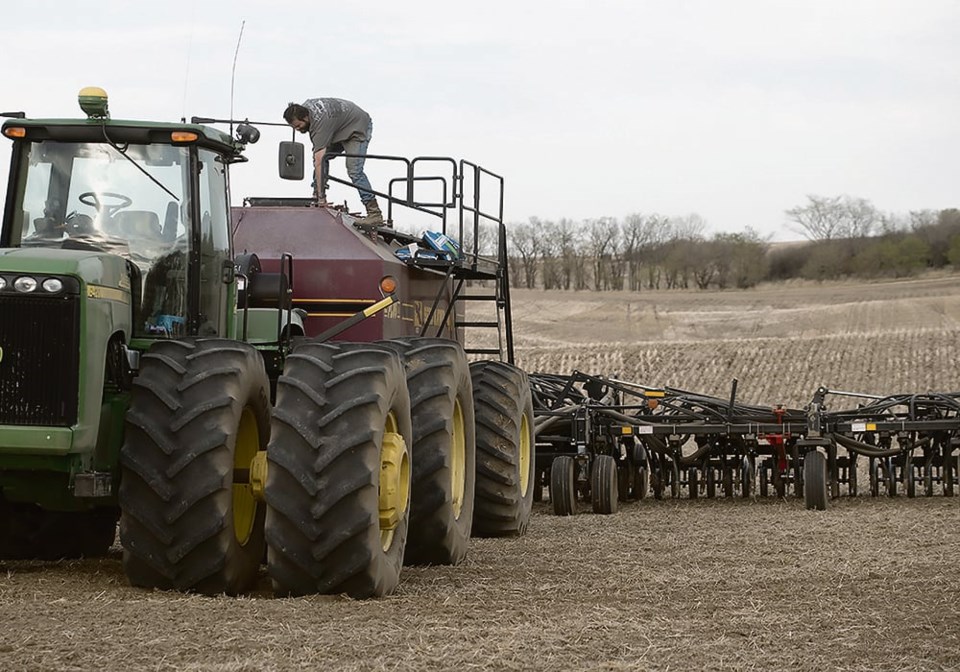REGINA — A study analyzing the carbon footprint of five key crops found Saskatchewan’s emissions are far lower than other leading producers.
The Global Institute for Food Security released the results of its two-part study on canola, wheat, durum, field peas and lentils last week. The study was carried out with the provincial government.
Olufunke Okochi, communications manager at GIFS, presented the data at the Agricultural Producers Association of Saskatchewan annual meeting.
“Because of Saskatchewan’s sustainable farming practices we do, by any margin, have the lowest number of emissions,” she said. “Saskatchewan has the smallest carbon footprint across all crop types in
The study has been submitted for peer review.
Premier Scott Moe has been using some of the data for the last year as part of his Sustainable Saskatchewan message. However, GIFS had not yet made the study public.
Now, Okochi said the data demonstrate that the adoption of practices such as no-till farming have contributed to sequestration unlike anywhere else.
The study compared Saskatchewan to the rest of Canada and selected competing countries and measured carbon footprints per tonne of production.
Using Canada as a baseline, the province’s emissions were 32 percent lower, while western Canadian emissions were 28 percent lower and Australia was three percent lower.
On the plus side of the ledger were France at 113 percent higher, Germany at 152 percent higher and Russia and Ukraine at 24 percent and 245 percent above the baseline.
For non-durum wheat, the province is 62 percent below the global weighted average, at 29 percent below the baseline. Western Canada as a whole has 13 percent lower emissions.
Australia, France, Germany, the United States, Russia and Ukraine are all above, ranging from Russia at 38 percent to Ukraine at 158 percent and the others more than 95 percent above.
“These numbers are a further result of agronomic practices that reduce field activities, fuel consumption and promote both soil health and agricultural productivity,” said Okochi.
Saskatchewan’s durum production is 78 percent lower than the global weighted average; the U.S. comes in at 99 percent higher and Italy at 378 percent higher.
For lentils, the difference between Saskatchewan and other countries is huge.
The study said the carbon intensity of Saskatchewan-produced lentils is negative because of high soil carbon levels that exceed the emissions associated with growing the crop. The province produces at 130 percent lower than the global weighted average, 32 percent lower than Canada. Australia is 464 percent higher and the U.S. is 710 percent higher.
Okuchi said the benefits of growing lentils also include breaking up disease cycles.
Finally, for field peas, Saskatchewan is 96 percent lower than the global weighted average.
The province produces at 62 percent below Canada, while Western Canada is 29 percent below. Competitors come in much higher with France at 515 percent higher, Germany 906 percent, the U.S. 561 percent, Russia 848 percent and Ukraine 1,271 percent.
Okochi said the province’s farmers have always said they use sustainable practices.
“Now we’ve got the data to actually prove what we’re saying,” she said.
Okochi said the practices can be adopted in other places to varying degrees but one size does not fit all.
“These numbers don’t only make Saskatchewan look good. They make Canada look good,” she said. “We know that Saskatchewan farmers sequester more carbon than anywhere in Canada and make significant contributions to Canadian agriculture being a net carbon sink.
“We know that agriculture innovation for which Saskatchewan is the birthplace of a lot of innovation that drives economic, environmental and social sustainability.”





SASKTODAY.ca is Saskatchewan's home page. Bookmark us at this link.